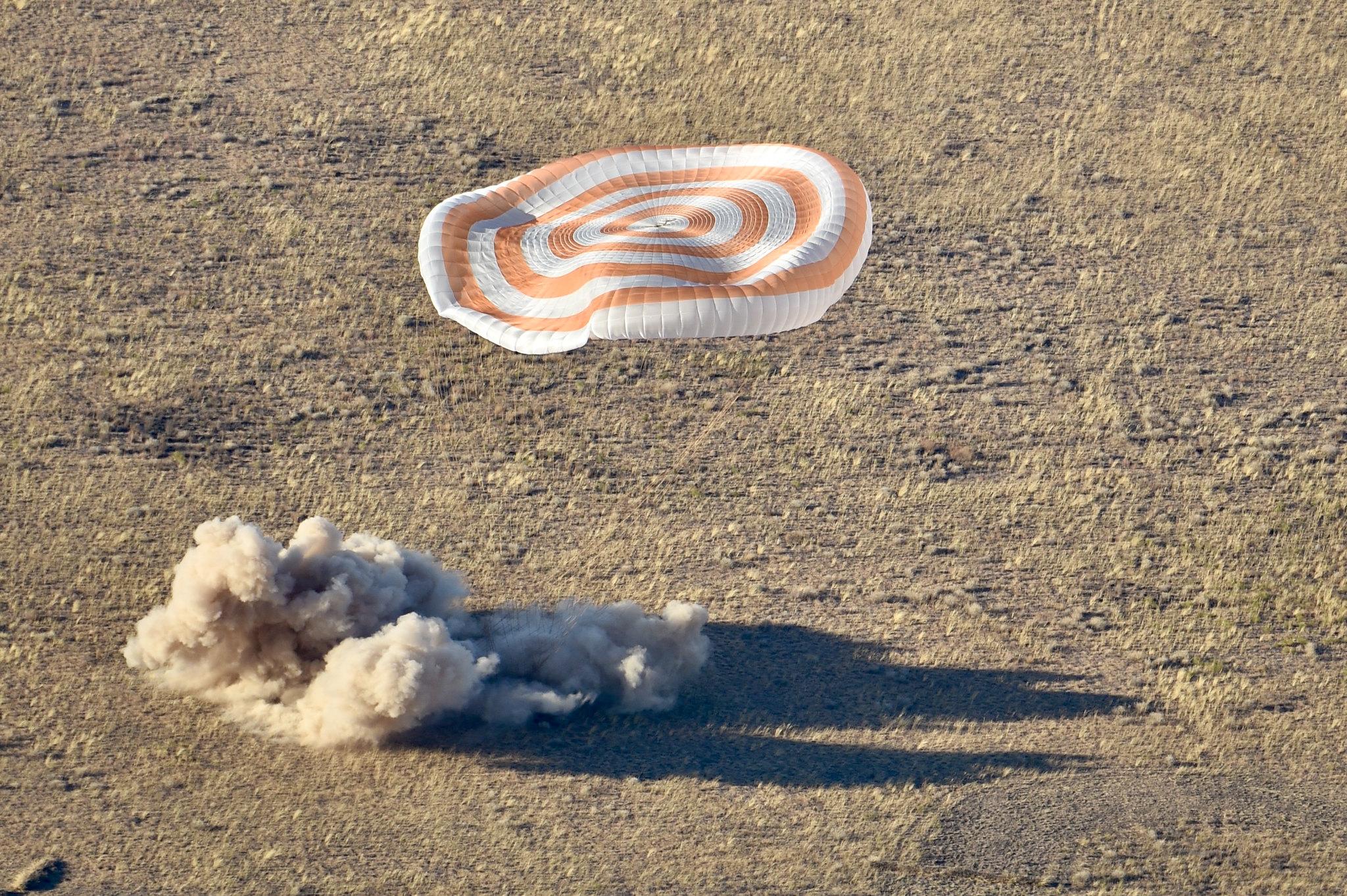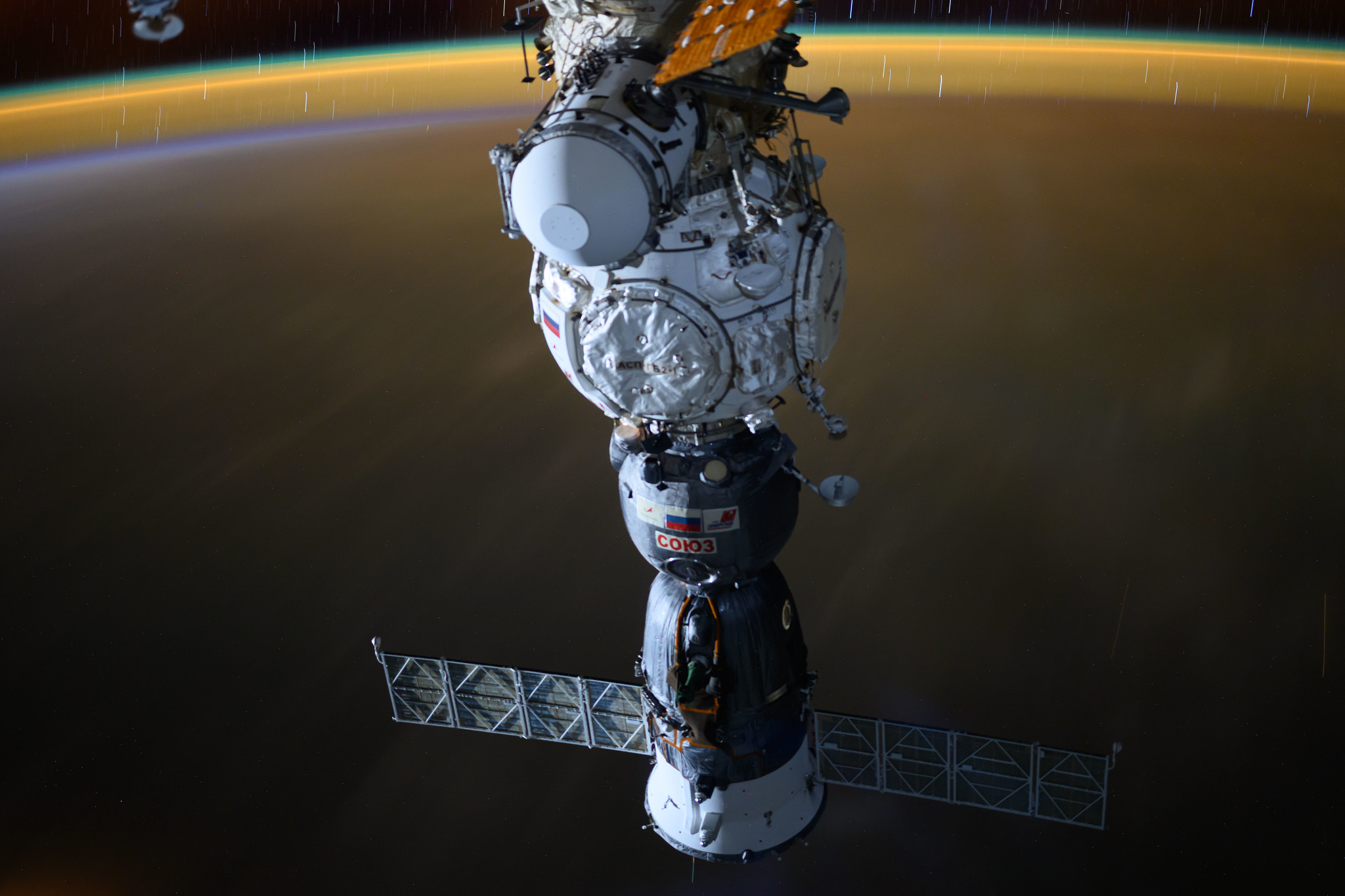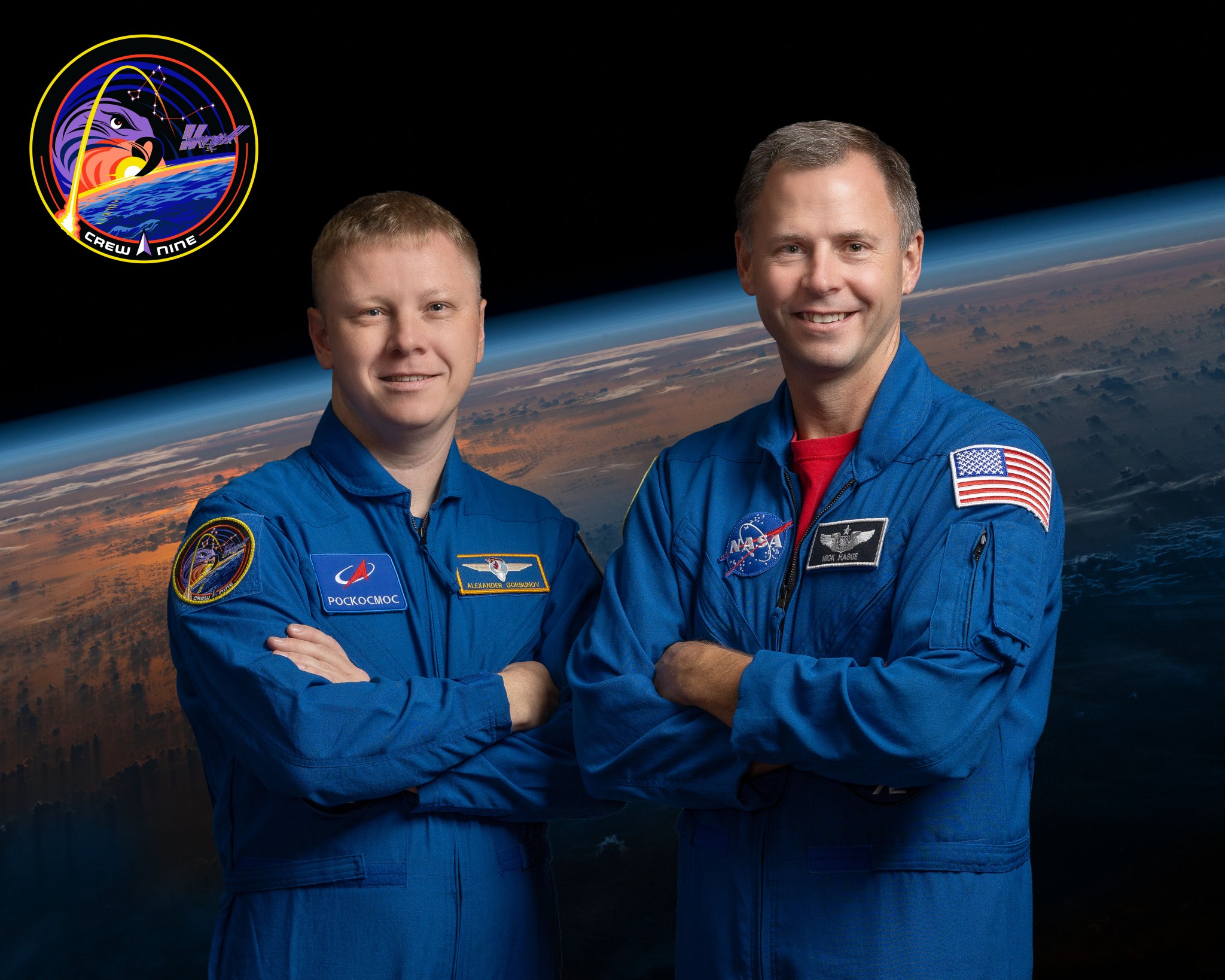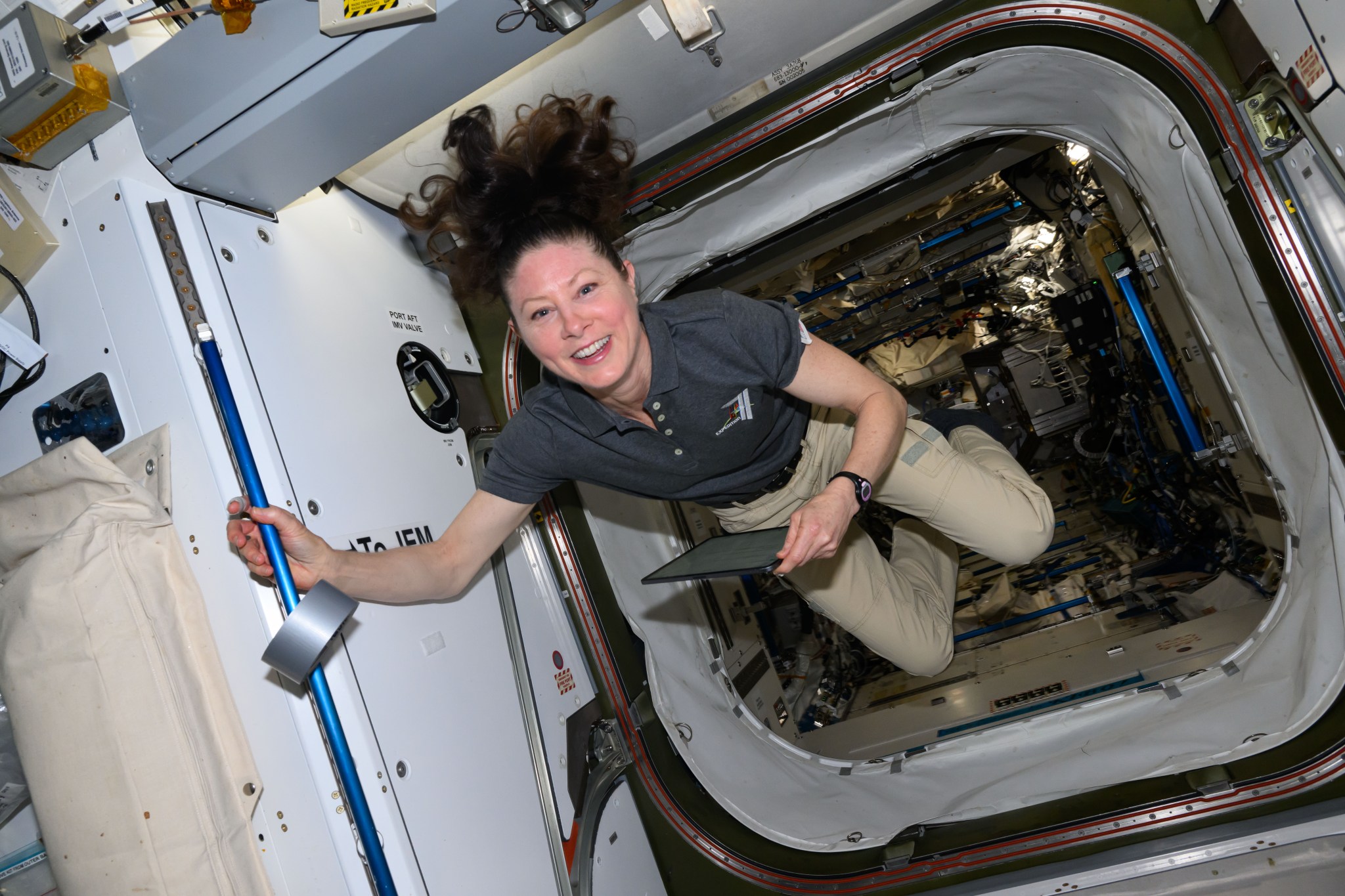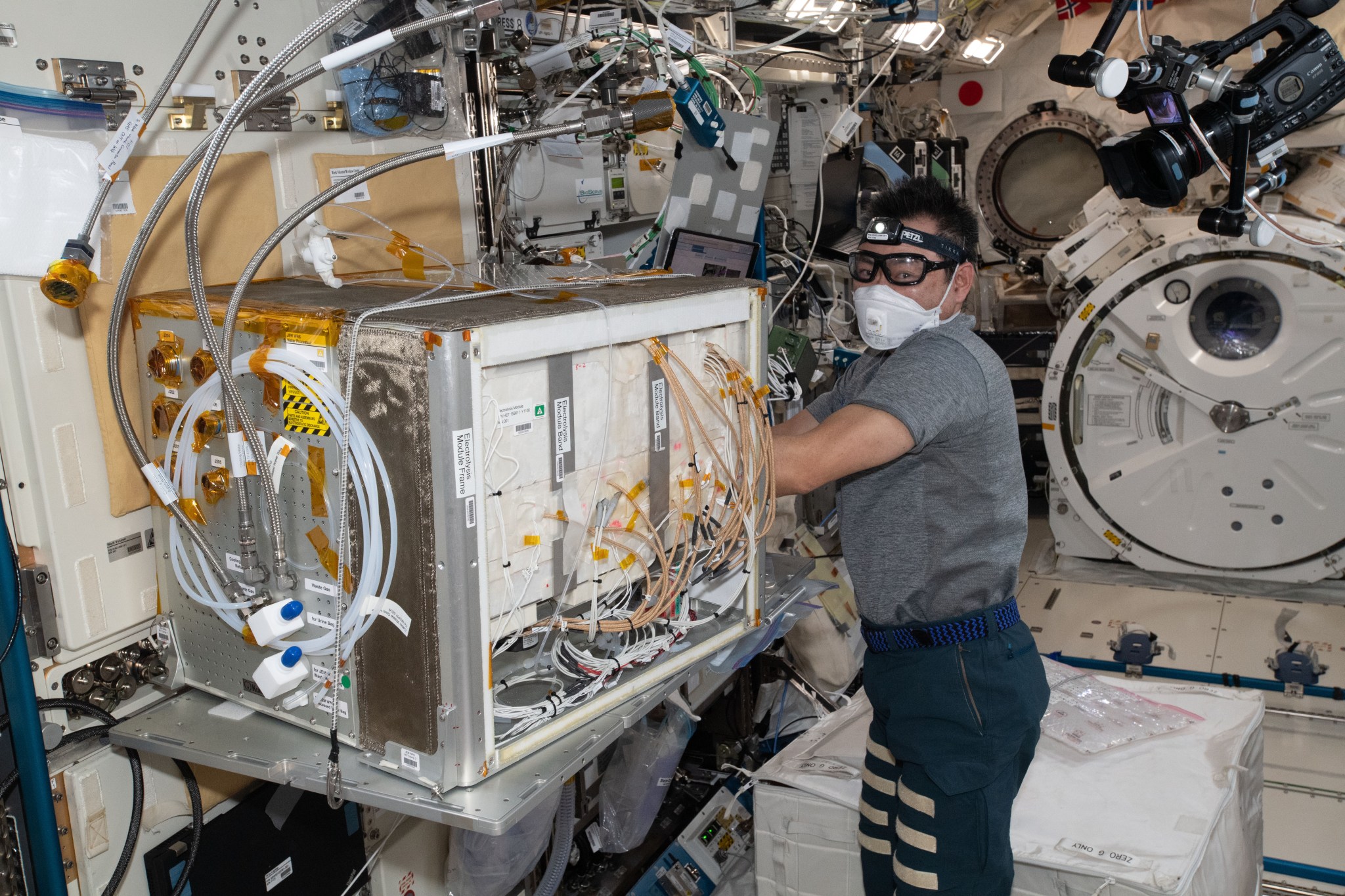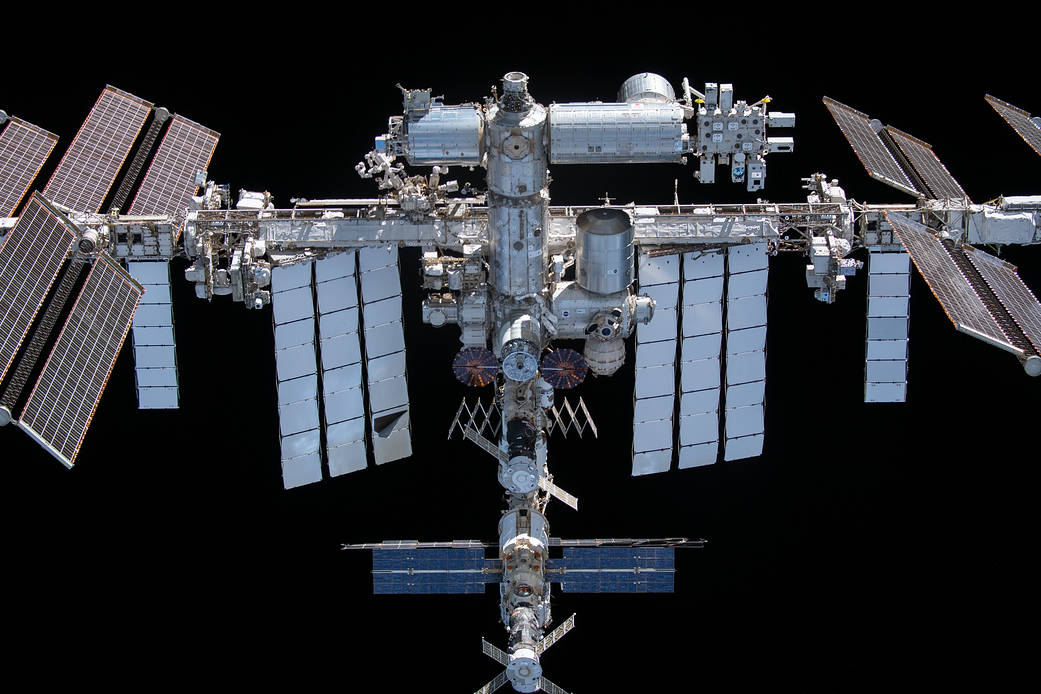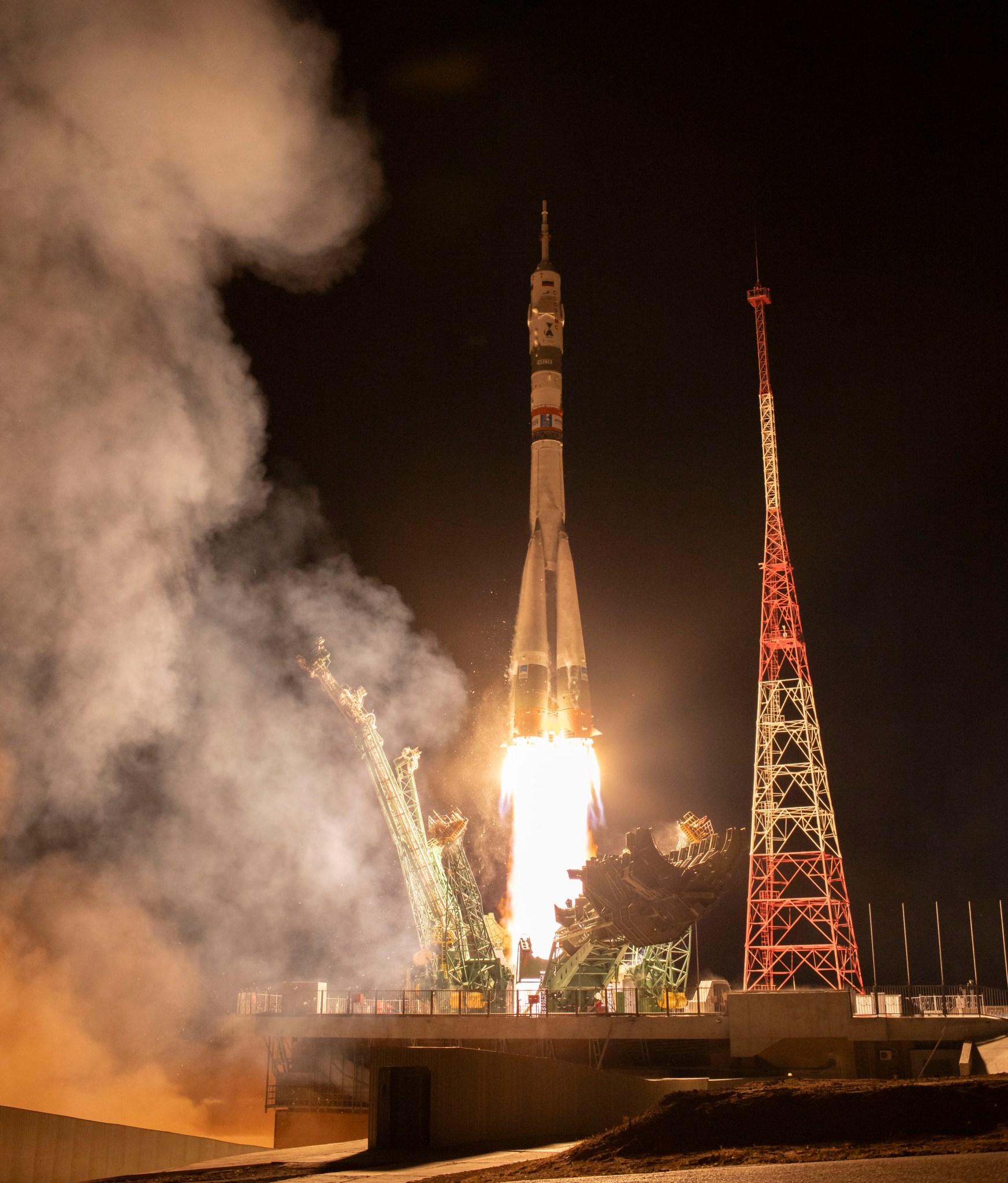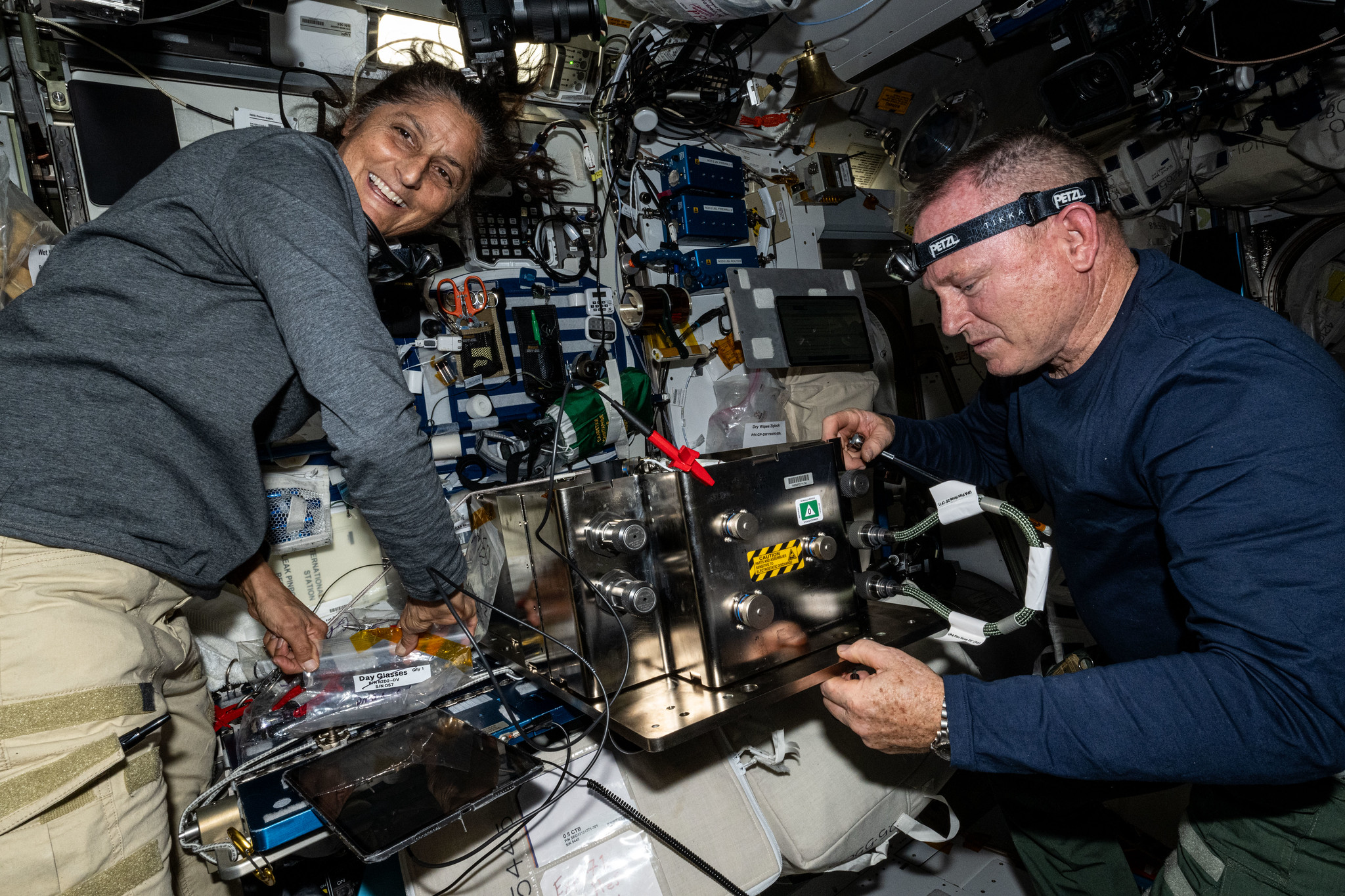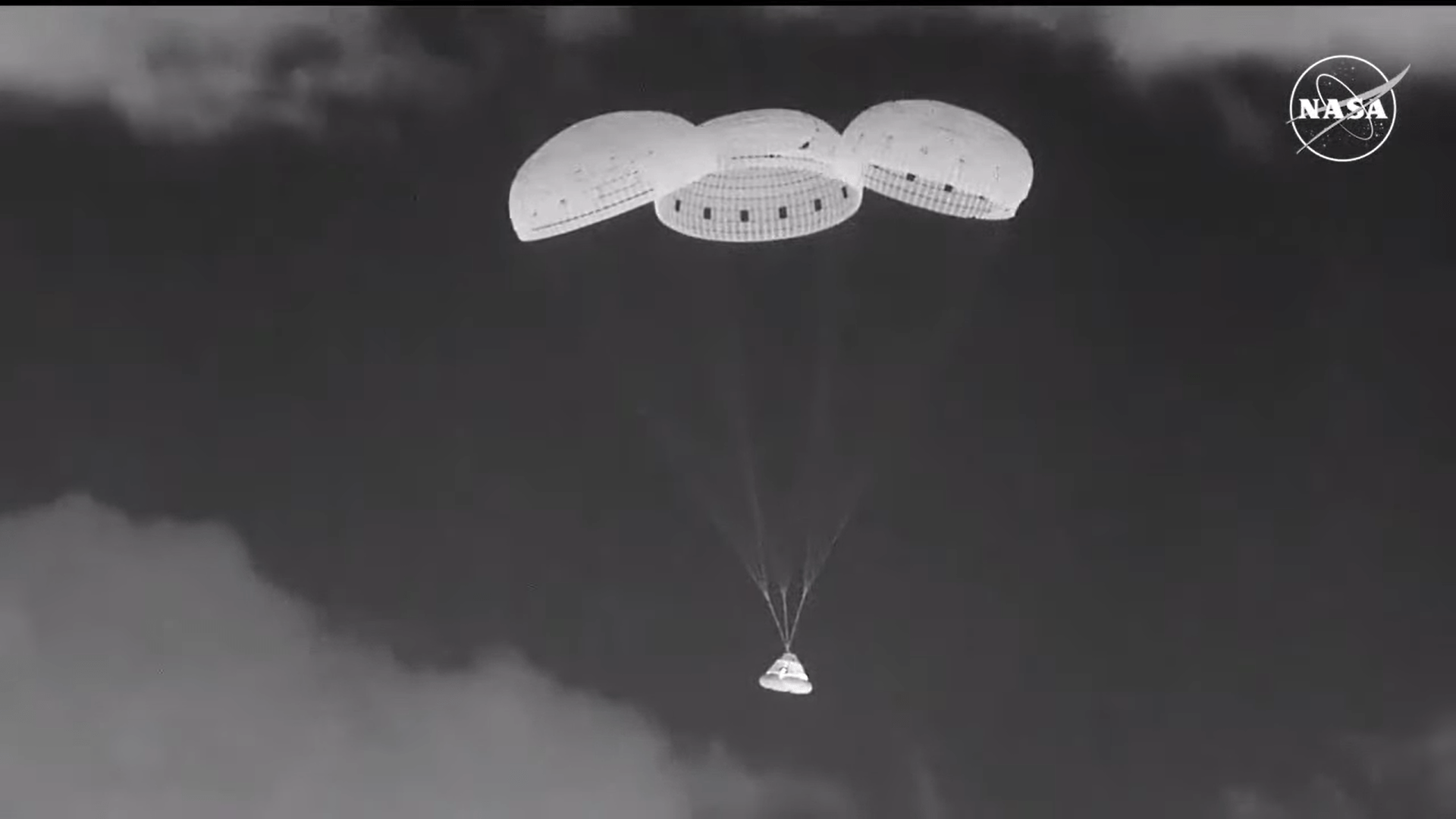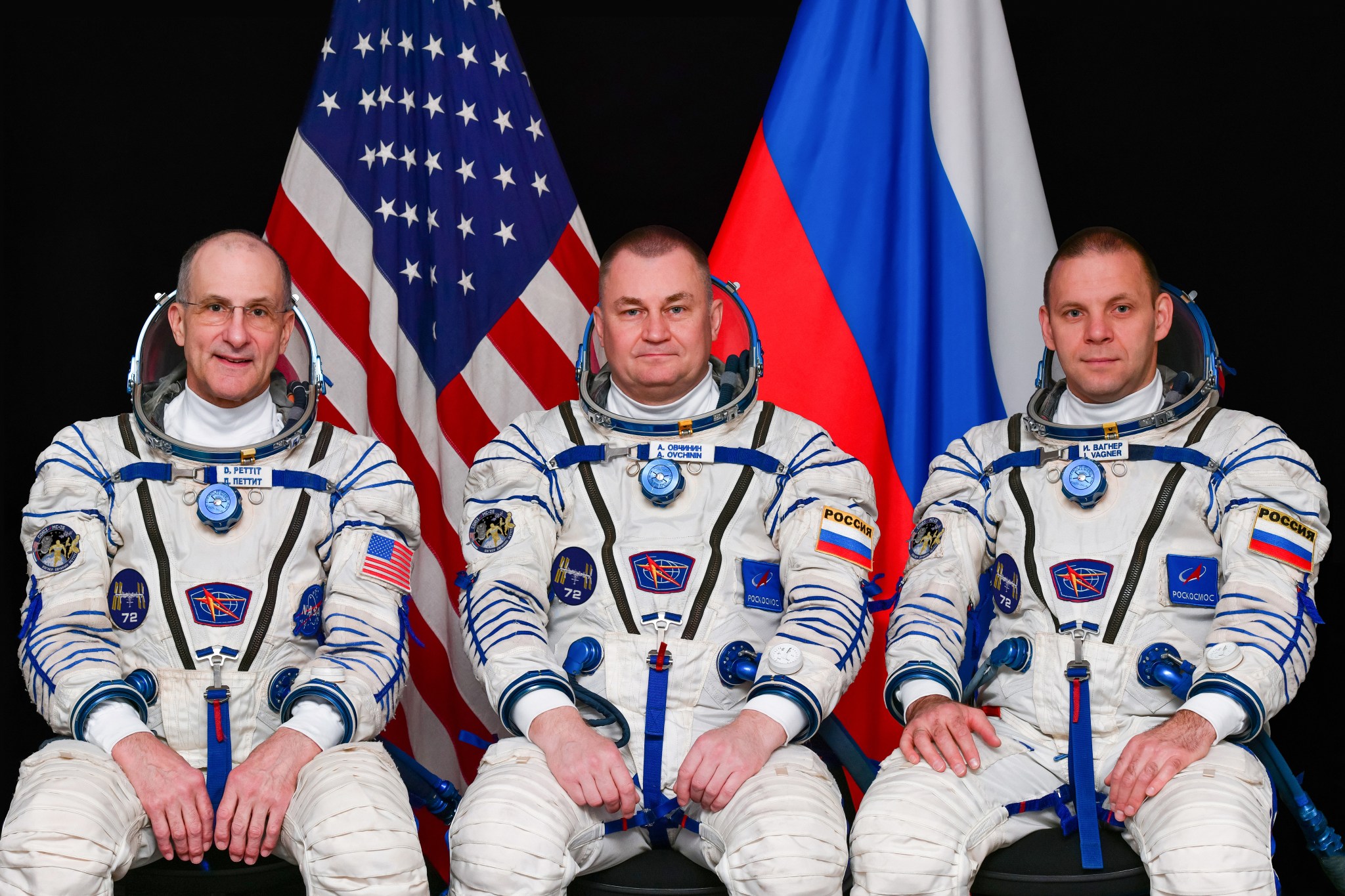The Soyuz MS-25 spacecraft is seen as it lands in a remote area near the town of Zhezkazgan, Kazakhstan with Expedition 71 NASA astronaut Tracy C. Dyson, and Roscosmos cosmonauts Nikolai Chub and Oleg Kononenko, Monday, Sept. 23. Dyson is returning to Earth after logging 184 days in space as a member of Expeditions 70-71 aboard the International Space Station and Chub and Kononenko return after having spent the last 374 days in space. Credits: NASA/GCTC/Pavel Shvets NASA astronaut Tracy C. Dyson completed a six-month research mission aboard the International…
Read MoreTag: International Space Station (ISS)
NASA Sets Coverage for Astronaut Tracy C. Dyson, Crewmates Return
The Roscosmos Soyuz MS-25 spacecraft is pictured docked to the International Space Station’s Prichal module in this long-duration photograph as it orbited 258 miles above Nigeria. Credit: NASA NASA astronaut Tracy C. Dyson, accompanied by Roscosmos cosmonauts Nikolai Chub and Oleg Kononenko, will depart from the International Space Station aboard the Soyuz MS-25 spacecraft, and return to Earth. Dyson, Chub, and Kononenko will undock from the orbiting laboratory’s Prichal module at 4:37 a.m. EDT Monday, Sept. 23, heading for a parachute-assisted landing at 8 a.m. (5 p.m. Kazakhstan time) on…
Read MoreWhat You Need to Know about NASA’s SpaceX Crew-9 Mission
5 min read Preparations for Next Moonwalk Simulations Underway (and Underwater) SpaceX Crew-9 members (from left) Mission Specialist Aleksandr Gorbunov from Roscosmos and Commander Nick Hague from NASA pose for an official crew portrait at NASA’s Johnson Space Center in Houston, Texas. NASA/Josh Valcarel NASA astronaut Nick Hague and Roscosmos cosmonaut Aleksandr Gorbunov are preparing to launch on the agency’s SpaceX Crew-9 mission to the International Space Station. The flight is the ninth crew rotation mission with SpaceX to the station under NASA’s Commercial Crew Program. The duo will lift…
Read MoreNASA Astronaut Tracy C. Dyson’s Scientific Mission aboard Space Station
4 min read Preparations for Next Moonwalk Simulations Underway (and Underwater) NASA astronaut Tracy C. Dyson smiles for a portrait in the vestibule between the Kibo laboratory module and the Harmony module aboard space station. NASA NASA astronaut Tracy C. Dyson is returning home after a six-month mission aboard the International Space Station. While on orbit, Dyson conducted an array of experiments and technology demonstrations that contribute to advancements for humanity on Earth and the agency’s trajectory to the Moon and Mars. Here is a look at some of the…
Read MoreStation Science Top News: September 13, 2024
JAXA (Japan Aerospace Exploration Agency) researchers examined the structures of four titanium-based compounds solidified in levitators in microgravity and on the ground and found that the internal microstructures were generally similar. These results could support development of new materials for use in space manufacturing. To produce glass or metal alloys on Earth, raw materials are placed into a container and heated. But reactions between the container and the materials can cause imperfections. The JAXA Electrostatic Levitation Furnace can levitate, melt, and solidify materials without a container. The facility enables measurement of the thermophysical properties of high…
Read MoreNASA’s SpaceX Crew-9 to Conduct Space Station Research
The International Space Station is pictured from the SpaceX Crew Dragon Endeavour during a fly around. NASA NASA astronaut Nick Hague and Roscosmos cosmonaut Aleksandr Gorbunov are headed to the International Space Station for the agency’s SpaceX Crew-9 mission in September. Once on station, these crew members will support scientific investigations that include studies of blood clotting, effects of moisture on plants grown in space, and vision changes in astronauts. Here are details on some of the work scheduled during the Crew-9 expedition: Blood cell development in space Megakaryocytes Orbiting…
Read MoreNASA Astronaut Don Pettit, Crewmates Arrive at Space Station
The Soyuz rocket launches to the International Space Station with Expedition 72 crew members: NASA astronaut Don Pettit, Roscosmos cosmonauts Alexey Ovchinin, and Ivan Vagner, onboard, Wednesday, Sept. 11, 2024, at the Baikonur Cosmodrome in Kazakhstan. Credit: NASA/Bill Ingalls NASA astronaut Don Pettit, accompanied by Roscosmos cosmonauts Alexey Ovchinin and Ivan Vagner, arrived at the International Space Station Wednesday, bringing its number of residents to 12 for the 13-day handover period. After a two-orbit, three-hour journey to the station, the Roscosmos Soyuz MS-26 spacecraft automatically docked to the orbiting laboratory’s…
Read MoreNASA Astronauts to Discuss Mission from Space Station
NASA astronauts Butch Wilmore and Suni Williams prepare orbital hardware for installation inside the International Space Station. Credit: NASA Media are invited to hear from NASA astronauts Butch Wilmore and Suni Williams during an Earth to space call at 2:15 p.m. EDT, Friday, Sept. 13. The pair will participate in a news conference aboard the International Space Station in low Earth orbit. Coverage of the event will stream on NASA+, the NASA app, and the agency’s website. Learn how to stream NASA content through a variety of platforms, including social…
Read MoreNASA, Boeing Welcome Starliner Spacecraft to Earth, Close Mission
NASA and Boeing welcomed Starliner back to Earth following the uncrewed spacecraft’s successful landing at 10:01 p.m. MDT Sept. 6, 2024, at the White Sands Space Harbor in New Mexico. Credit: NASA NASA and Boeing safely returned the uncrewed Starliner spacecraft following its landing at 10:01 p.m. MDT Sept. 6 at White Sands Space Harbor in New Mexico, concluding a three-month flight test to the International Space Station. “I am extremely proud of the work our collective team put into this entire flight test, and we are pleased to see…
Read MoreNASA Sets Coverage for Crew Launch; Trio to Join Expedition 71
The Roscosmos Soyuz MS-26 spacecraft will launch from the Baikonur Cosmodrome in Kazakhstan to the International Space Station with (pictured left to right) NASA astronaut Don Pettit and Roscosmos cosmonauts Alexey Ovchinin and Ivan Vagner. Credit: Gagarin Cosmonaut Training Center NASA astronaut Don Pettit will launch aboard the Roscosmos Soyuz MS-26 spacecraft, accompanied by cosmonauts Alexey Ovchinin and Ivan Vagner, to the International Space Station where they will join the Expedition 71 crew in advancing scientific research. Pettit, Ovchinin, and Vagner will lift off at 12:23 p.m. EDT Wednesday, Sept.…
Read More